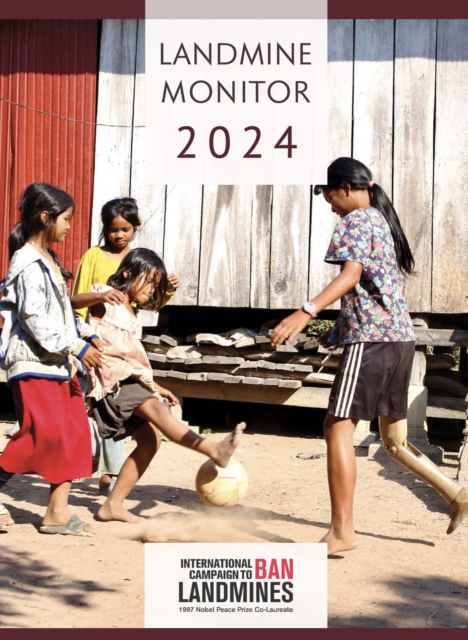Landmine Monitor 2024


Landmines and Explosive Remnants of War
Peace agreements may be signed, and hostilities may cease, but landmines and explosive remnants of war (ERW) are an enduring legacy of conflict.
Antipersonnel mines are munitions designed to explode from the presence, proximity, or contact of a person. This includes improvised antipersonnel landmines, which constitute improvised explosive devices (IEDs) with those same human-activated characteristics. Antivehicle mines are munitions designed to explode from the presence, proximity, or contact of a vehicle as opposed to a person. Landmines are inherently indiscriminate weapons, meaning that, by design, it is not possible for the mine to be deployed to target a specific person. Hence, casualities can occur among whoever triggers the mine, whether a child or a soldier, as well as anyone nearby.
Mines emplaced during a conflict against enemy forces can still kill or injure civilians decades later.
ERW refers to ordnance that either failed to explode or was abandoned, remaining a danger to anyone who may encounter it. Explosive weapons that for some reason fail to detonate as intended become unexploded ordnance (UXO). These unstable explosive items are left behind during and after conflicts and pose dangers similar to landmines. Abandoned explosive ordnance (AXO) refers to explosive weapons that have not been used during armed conflict but have been left behind and are no longer effectively controlled. Under the international legal definition, ERW consists of UXO and AXO, but not mines. ERW can include artillery shells, grenades, mortars, rockets, air-dropped bombs, and also applies to cluster munition remnants. Cluster munitions are defined by the Convention on Cluster Munitions and are subject to a specific set of legal obligations under that convention.
Landmines and ERW pose a serious and ongoing threat to civilians. These weapons can be found on roads and footpaths, in farmers’ fields, in forests and deserts, along territorial borders, in and around critical infrastructure, in houses and schools, as well as other places where people are carrying out their daily activities. Mines and ERW impede access to food, water, and other basic needs, and restrict freedom of movement. They endanger transit and prevent the safe return of refugees and internally displaced persons (IDPs), as well as hamper the delivery of humanitarian aid.
These weapons instill fear in communities. Many residents are unaware of the contamination and its hazards, however, even when aware of potentially mined areas, residents are often forced to take risks just to go on with their lives, having no alternative land to farm for their livelihood or safer routes to access schools. When land cannot be cultivated, when medical systems are drained by the cost of attending to mine/ERW casualties, and when countries must spend money clearing mines rather than paying for education, it is clear that these weapons not only cause appalling human suffering, but that they are also a lethal barrier to the implementation of the Sustainable Development Goals (SDGs) and post-conflict reconstruction.
There are solutions to the global mine problem. The 1997 Mine Ban Treaty (officially the Convention on the Prohibition of the Use, Stockpiling, Production and Transfer of Anti- Personnel Mines and on their Destruction) provides the best framework for governments to alleviate the suffering of civilians living in areas affected by antipersonnel mines.1 Governments that join this treaty must stop the use, stockpiling, production, and transfer of antipersonnel mines immediately. They must destroy all stockpiled antipersonnel mines within four years and clear all antipersonnel mines in mined areas under their jurisdiction or control within 10 years. In addition, States Parties in a position to do so must provide assistance for the care and treatment of landmine survivors, their families and communities, as well as support for mine/ERW risk education programs to help prevent future incidents.
This legal instrument provides a framework for taking action, but it is up to governments to implement treaty obligations; and it is the task of non-governmental organizations (NGOs) to work together with governments to ensure they uphold their treaty obligations.
The ultimate goal of the International Campaign to Ban Landmines (ICBL) and its sister campaign, the Cluster Munition Coalition (CMC), is a world free of landmines and cluster munitions—a world where civilians can walk freely without the fear of stepping on a mine; where children can play without mistaking an unexploded submunition for a toy; where communities are no longer burdened with the long-term socio-economic impacts of living on or near contaminated land; and where the rights of mine/ERW survivors and persons with similar needs are protected.
Download full report here
Download press release here

